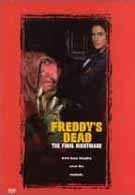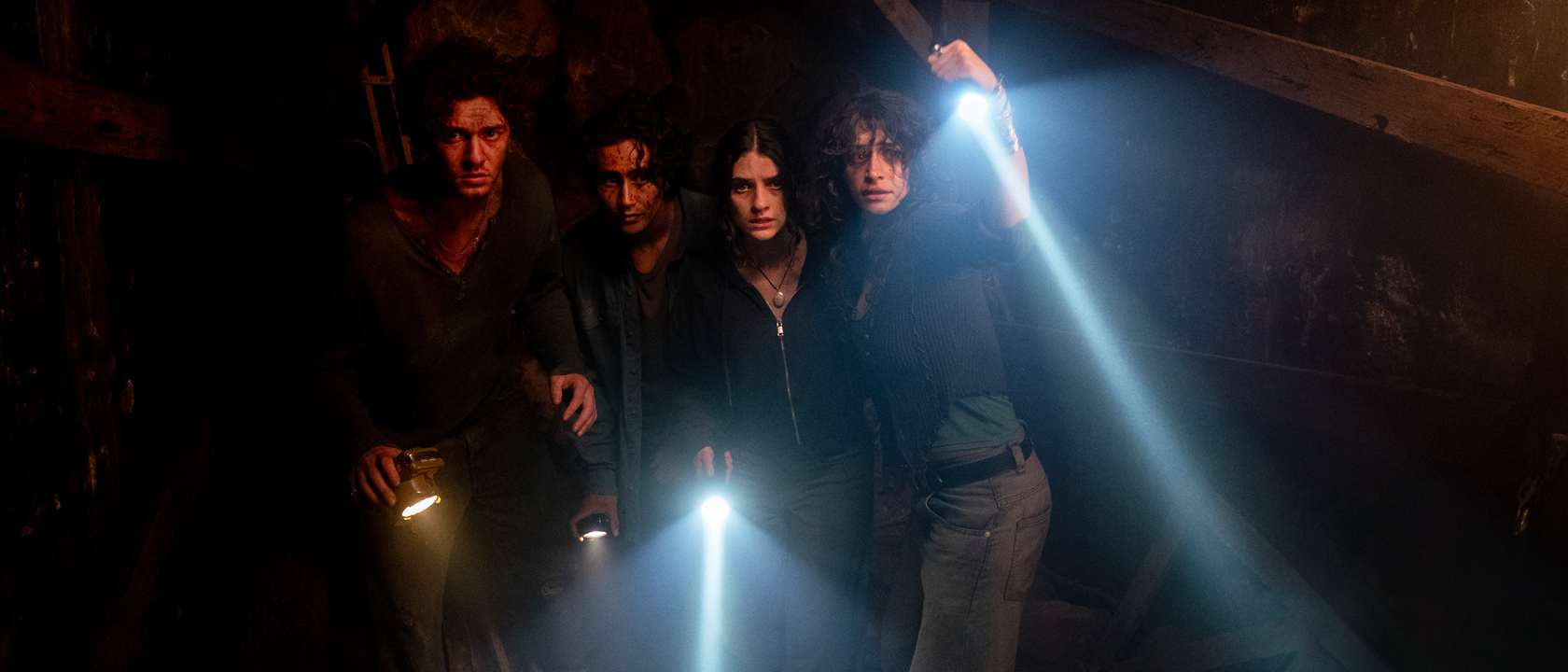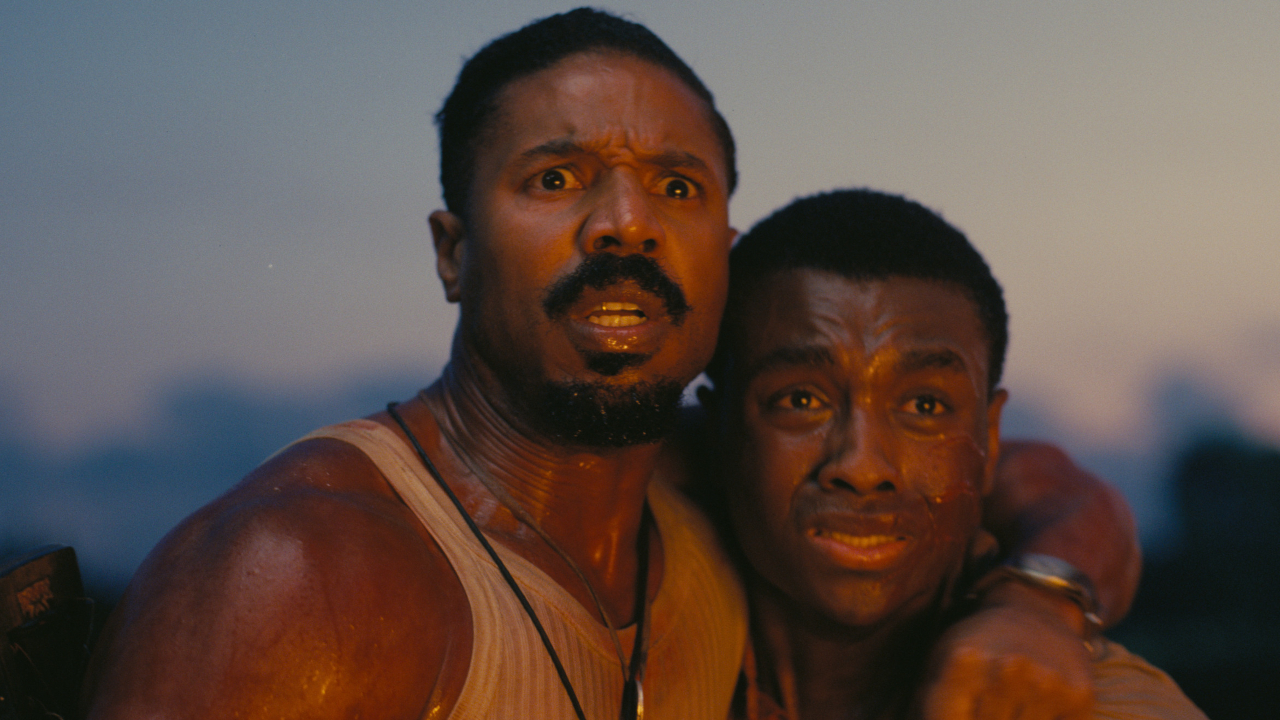Psyche-stalker Freddy Krueger (Robert Englund) is back, again, for the sixth (and supposedly last) time in Freddy’s Dead: The Final Nightmare, a film that so conclusively promises to be the last entry in the popular Nightmare on Elm Street series that the title tries to prove it twice. Maybe they’re serious this time. Just so long as this doesn’t end up being a so-called “Final Chapter;” the type that cinematic cousin Jason Voorhees (of Friday The 13th infamy) pulled in 1984, only to return eleven months later in the cleverly titled New Beginning. There is no pretense here to show Freddy outlandishly resurrected once again (like the flaming dog urine that brought him back in Nightmare 4). This being part six of the franchise, we know that he did not actually die at the end of the previous film, so there is no reason to pretend that he did. At this point, our interest is not how he comes back one last time, but how he goes out for good.
So the famed slasher is still menacing teenagers’ dreams. The only problem is that Freddy has offed all of the offspring of those who torched him (and inadvertently created a monster) and completely erased the under-20 population in his hometown. Like a buffet line at midnight, Freddy has run out of a selection. Forget variety; this guy is running on empty. You see, he is tired of living in a dream world (how metaphorical) and now has a plan to make his way out into the real world. Maybe someone should warn him that there’s a war going on out here and he should probably wait. Now, the greatest threat to teens across the country is that the most diabolical razor-gloved maniac may be coming to the reality near you.
The instrument in Freddy’s not-so-divine plan is a mysterious John Doe (Shon Greenblatt), an amnesiac who appears to have come from nowhere but is inadvertently leading future victims to the killer. He is picked up unconscious on the road and dropped off at a shelter for disturbed teenagers, where a child psychologist (Lisa Zane) tries to help him, but discovers that somehow she is connected to what is going on. Freddy also apparently has a kin who no one decided to mention in Nightmare 1-5 but is the only one can defeat him. The team behind this entry takes the much-needed liberty to explain why exactly Freddy originated as a child murderer before moving on to the 15-20 crowds. I guess he knew his target audience.
This starts out as a moderately entertaining special-effects freak show. A creepy town fair, decrepit houses and fiery abandoned factories woven in with some fancy visuals lead me to believe that the decade’s most hated character was going to exit in style. For the first hour, this seems to be the case. Then the film goops into a trendy, contrived wreck, replete with 3-D glasses, “Nintendo” references (Freddy claims a victim in a video game mock-up and exclaims “Great graphics!”) and sporadic cameos by Roseanne and Tom Arnold, Johnny Depp (who made his debut in the original Nightmare) and Alice Cooper. This approach of infusing self-mocking humor only makes it more evident that Freddy is an icon whom no one should fear. We have no reason to root for the hero, because the hero is the villain. We revel in his creative murders and always look forward to the next, rather than fear them. Without a colorful hero to combat the demon, the battle is one-sided. Krueger is no longer a monotone menace, but a second-rate “Joker” wearing three-cheese pizza as a mask.
The tagline “They saved the best for last” is even a joke. If there were any truth in advertising, then this franchise would have ended in 1988, with the witty and inventive Dream Master. The highly trumped 3-D finale is the biggest bust of all. With seven years of false endings, everyone involved should have made sure that this was not only a spectacular exit, but also one that, despite the main character’s gory past, might have had fans like me reduced to tears. The climactic bout between Freddy and his maker is shakily shot, overlong, and tosses in pointless 3-D effects (which will look just plain goofy on video) to create a sendoff that bears more resemblance to a rehearsal than an actual shot. Because of the title, there is no surprise when Freddy is dead because we know it is going to happen. Which is okay, since the entire film exists to showcase his demise. Without a proper demise, the film defeats its own purpose for being.
Somehow, I believe everyone aboard knew that the ending was lame. The end credits go split screen with a last-minute memory booster of a clip show, playing all of your favorite moments from the previous Nightmare films and concluding with “R.I.P.” shown over one final image of the title character. If they really meant for Freddy to rest in peace, then they would have given him a proper burial.











